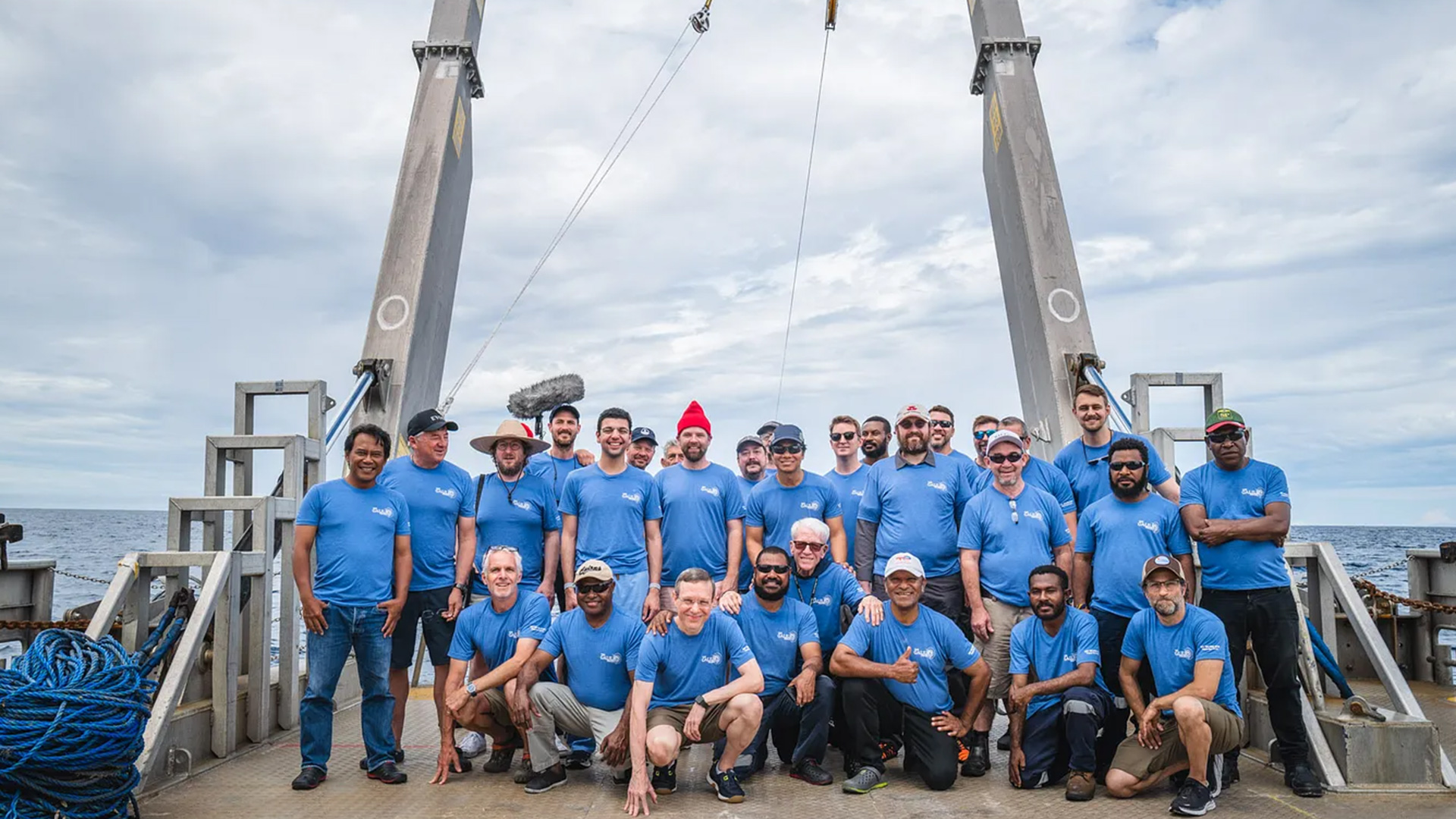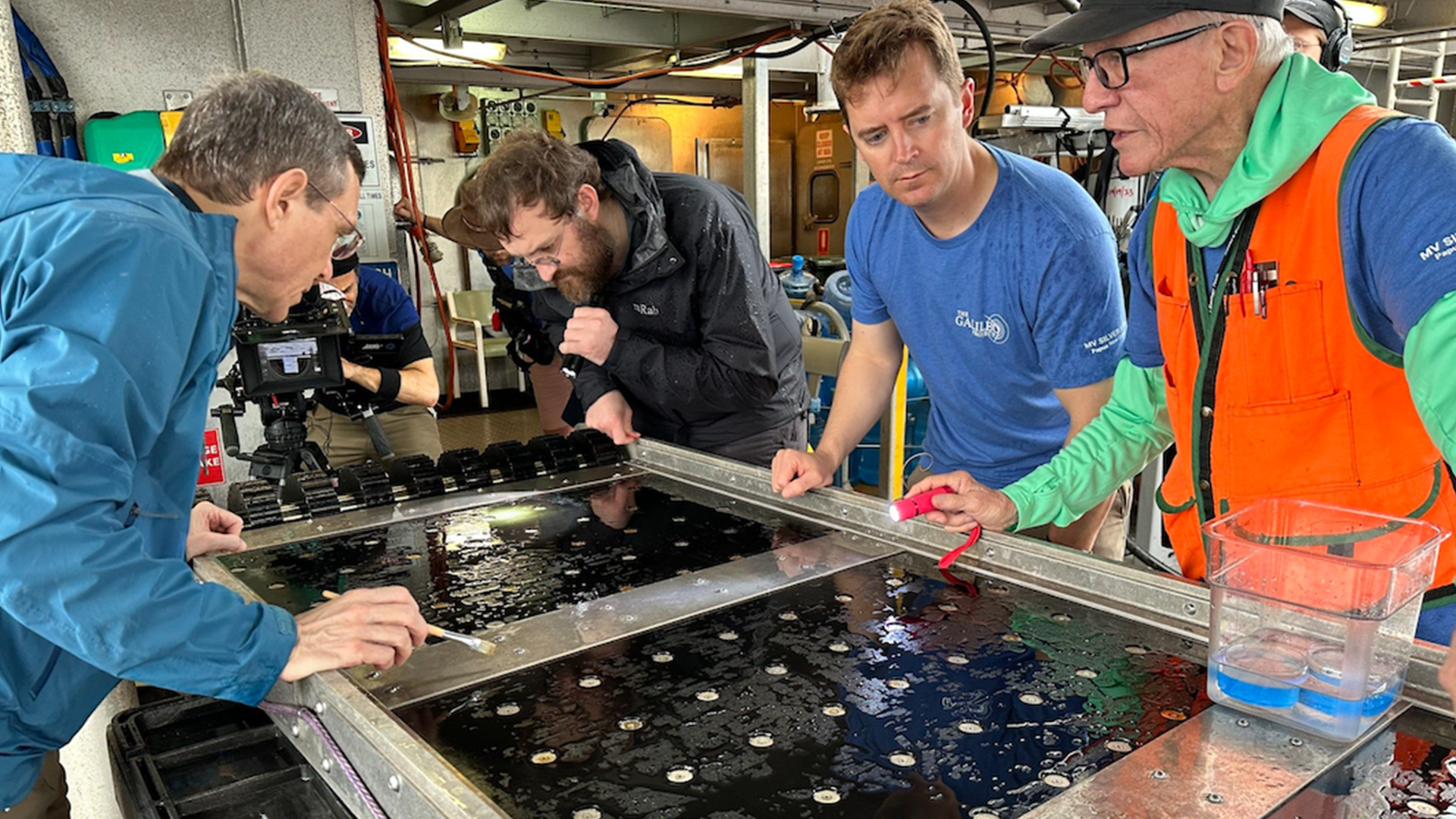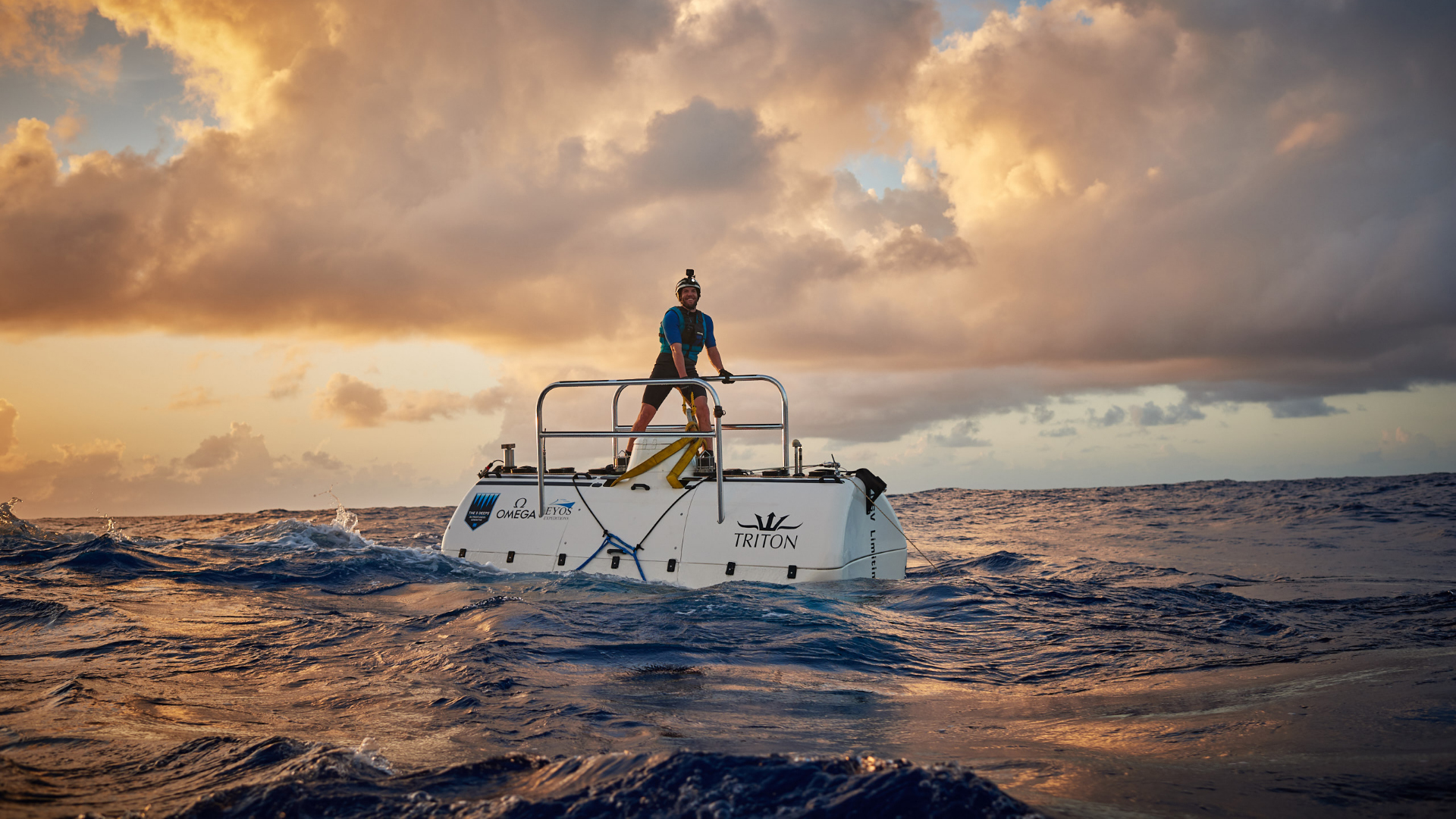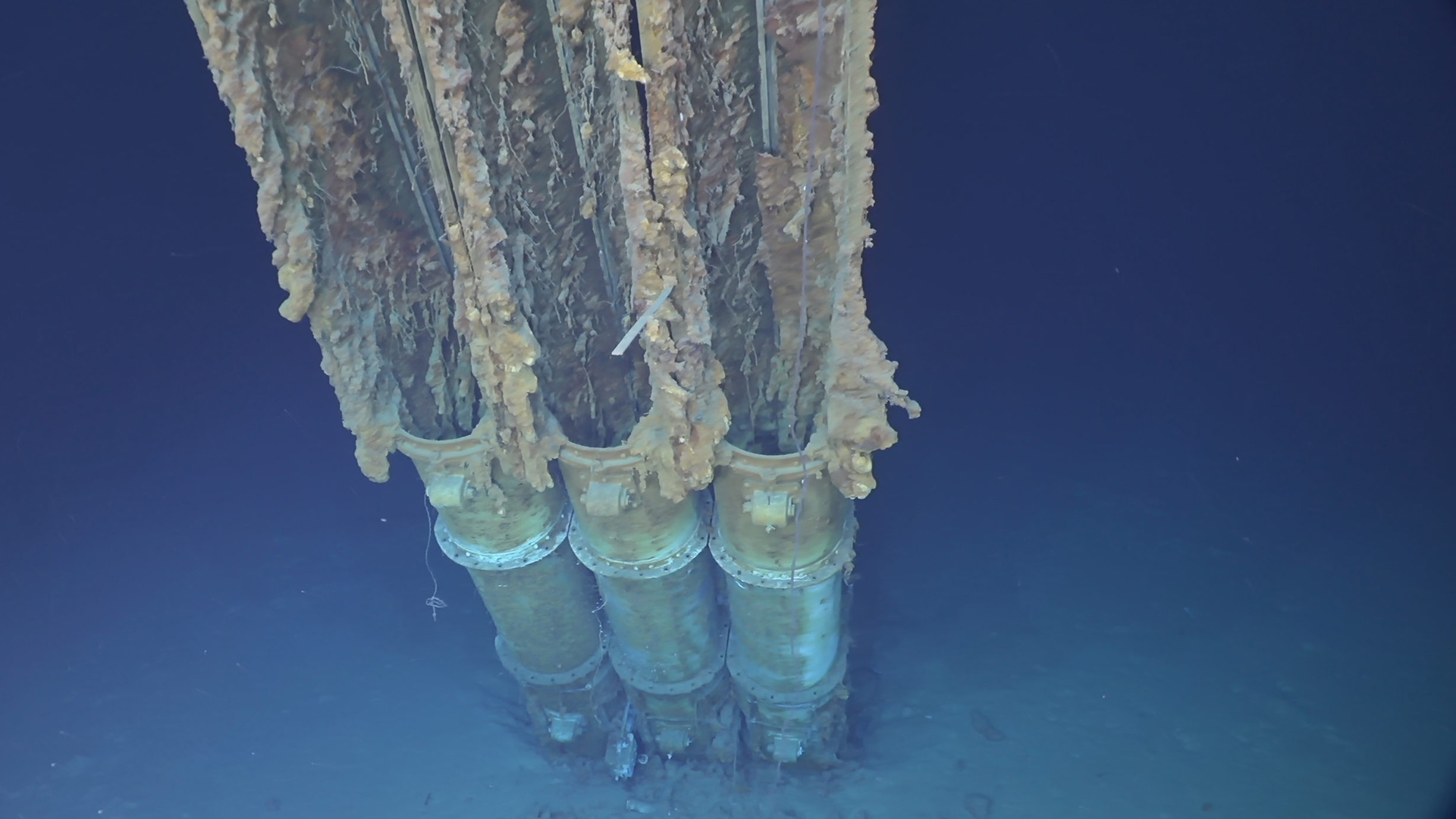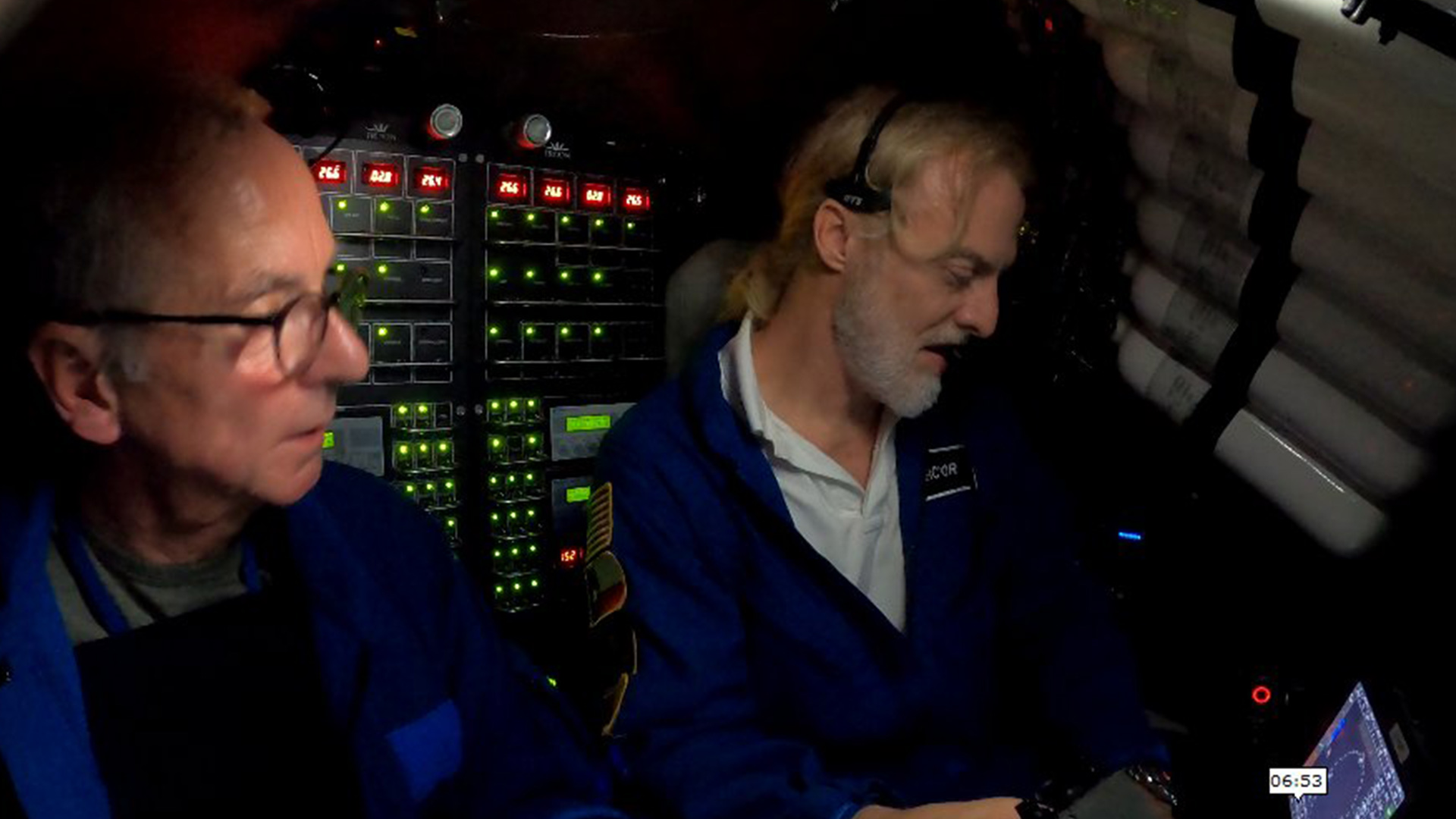Manus, Papua New Guinea — The Interstellar Expedition, led by the expedition’s Chief Scientist, Harvard University Astrophysicist Avi Loeb and coordinated by Expedition Leader Rob McCallum of EYOS Expeditions, has identified and collected 50 metallic spheres unmatched to any existing alloys in our solar system, indicating a first-of-its-kind finding of interstellar evidence in human history.
These spheres are believed to be remnant fragments of a basketball-sized meteorite that slammed into the Earth’s atmosphere and into the western Pacific Ocean in 2014. Originating from outside the solar system, it was moving at a speed twice faster than 95% of the stars in the vicinity of the Sun. It was too small to be noticed by telescopes through its reflection of sunlight, but its collision with Earth generated a bright fireball recorded by US government sensors.
The interstellar origin was then identified in a paper Loeb co-wrote with Harvard undergraduate student Amir Siraj in 2019, and confirmed three years later [with 99.999% confidence] by the US Space Command to NASA. It was labeled “Interstellar Meteor 1”, abbreviated as IM1.
IM1’s discovery raised questions of its origin, and whether it was made of an artificial alloy that allowed it to survive down to Earth’s lower atmosphere. The Interstellar Expedition’s mission was to recover the fragments left over from the explosion on the floor of the Pacific Ocean via an expedition at its crash site near Manus Island in Papua New Guinea.
The Interstellar Expedition has used PNG vessel MV Silver Star as its primary operations platform during the search. The expedition was staged out of Lorengau, Manus Island and during June 14-28 conducted an extensive towed-sled survey over the seafloor, covering over 175 kilometers of search-lines over the calculated path of the meteorite’s path. During the towing, the team found 50 metallic spherules of size 0.1-1 millimeter in their samples.
“That we were able to collect sub-millimeter spherules from the bottom of the Pacific Ocean near the fireball coordinates of the first recognized interstellar meteor, is a testimony to the success of the scientific method” said Professor Loeb.
The team’s preliminary analysis of the spherule’s composition does not match commonly manufactured alloys or natural meteorites in the solar system. The spherules were mostly found along the expected meteor path. Initial analysis indicates that their characteristic morphology and composition (mostly iron but negligible nickel, plus trace elements), indicate a common source which is different from background spherules found in control regions. Mass spectroscopy and Uranium-lead dating hint at the interstellar origin suggested by the measured IM1 velocity.
“The spherules were retrieved from a depth of about 2 kilometers at the bottom of the Pacific Ocean, where they rested for nearly a decade after arriving there on January 8, 2014 as the fireball’s molten relics. The fundamental question is whether the meteor was natural or technological in origin, given its anomalously high speed and material strength. We hope to answer this question by further analysis of its isotopic composition and radioactive dating” said Professor Loeb.
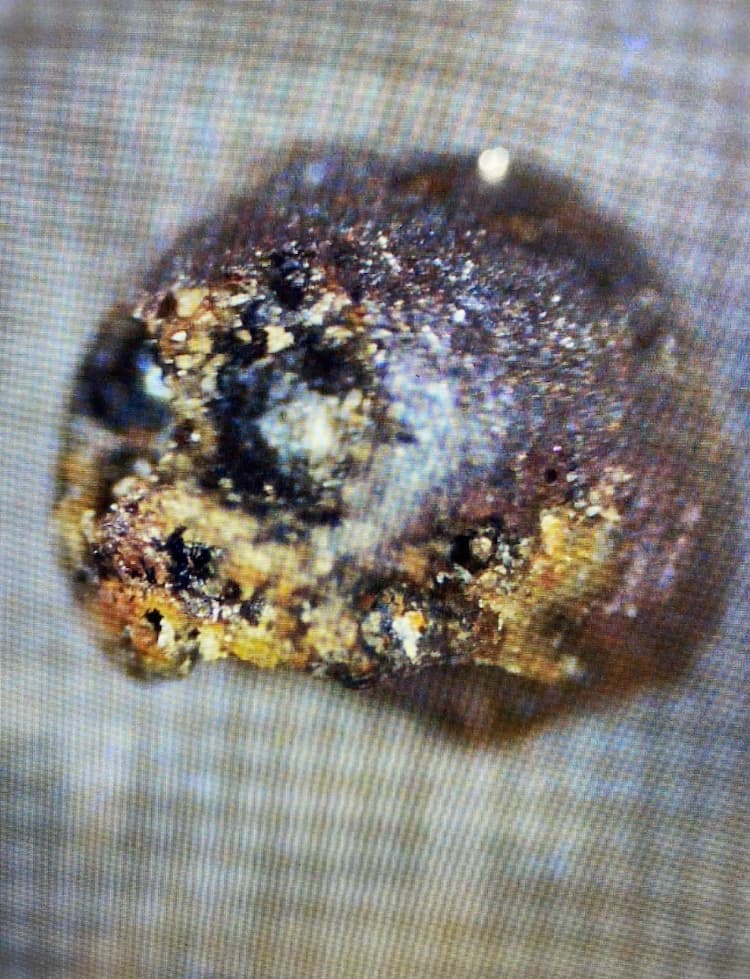
The expedition was funded privately by American entrepreneur Charles Hoskinson. “It’s been a remarkable pleasure traveling and working with such a brilliant and creative team of scientists, engineers, and sea salvage experts. We’ve been looking for something the size of a watermelon in the middle of the Pacific Ocean and somehow managed to find some fragments. This operation has produced excellent science and I hope captures the imagination of the general public for the pursuit of intelligent life in the universe.”
“Much like the discovery of the first exoplanet, the first recovery of material from an interstellar object will revolutionize our understanding of our cosmic context. Our discovery of the first interstellar meteor four years ago showed us that the cosmos is much more interconnected than we had previously imagined; now, studying its material reveals how we measure up to our neighborhood of planetary systems” said Amir Siraj.
Rob McCallum said “the EYOS team has now planned, managed and led hundreds of expeditions of all types, and increasingly these are privately funded, science-focused initiatives. We enable some of the most ambitious projects on Earth, but this one is, quite literally, out of this world”.
The analysis and results will be submitted for publication in a peer-reviewed journal.
The Interstellar Expedition team aboard MV Silver Star, 100kms north of Papua New Guinea. Team members from Papua New Guinea, USA, New Zealand, Israel, Singapore, Thailand, Indonesia and the United Kingdom.
